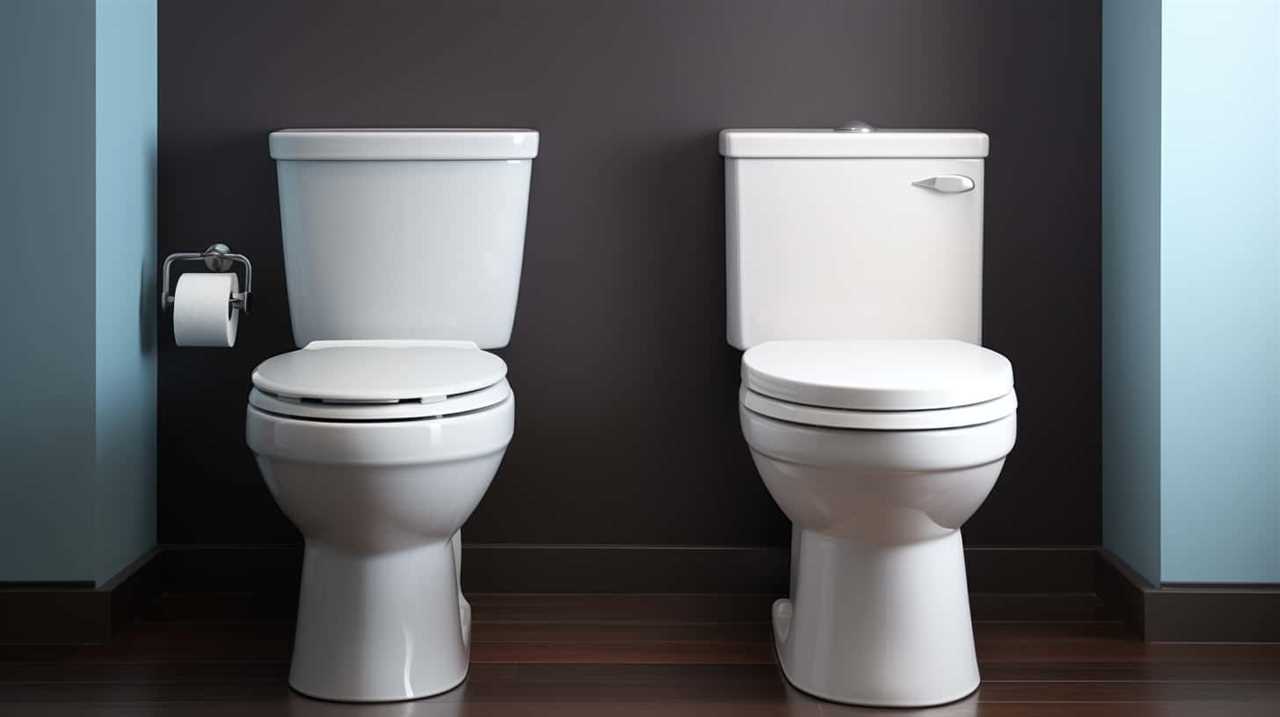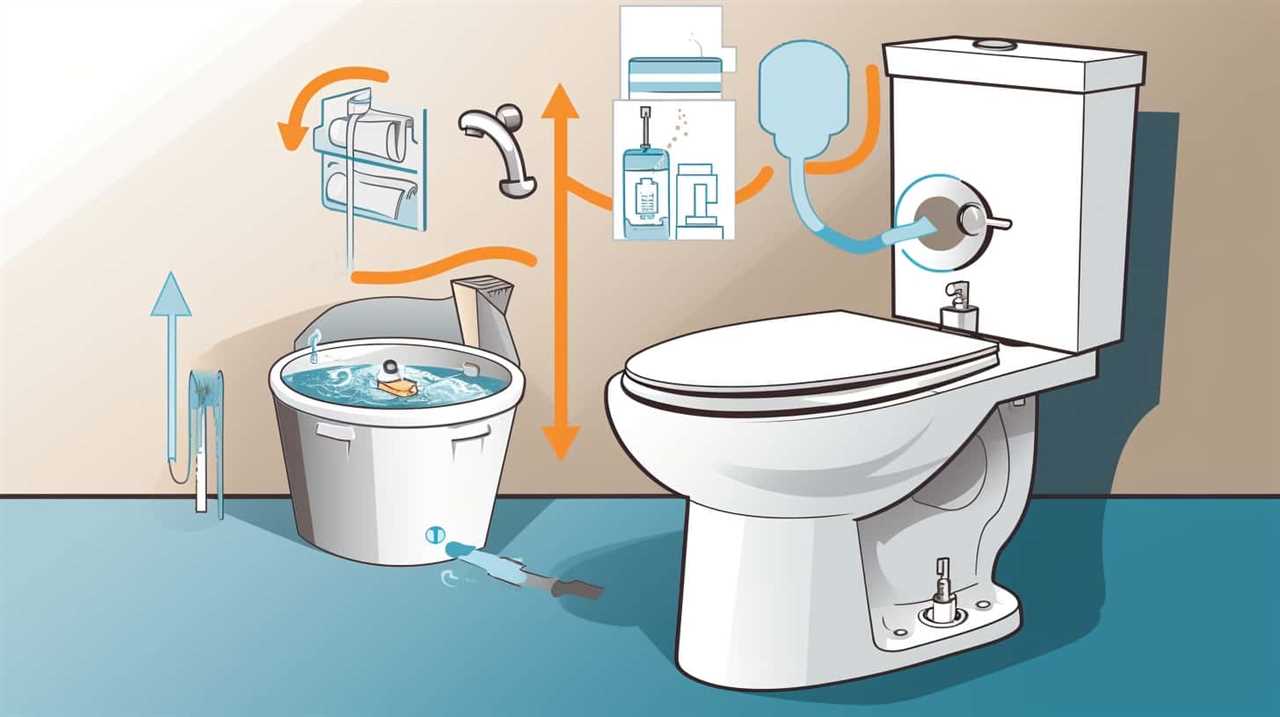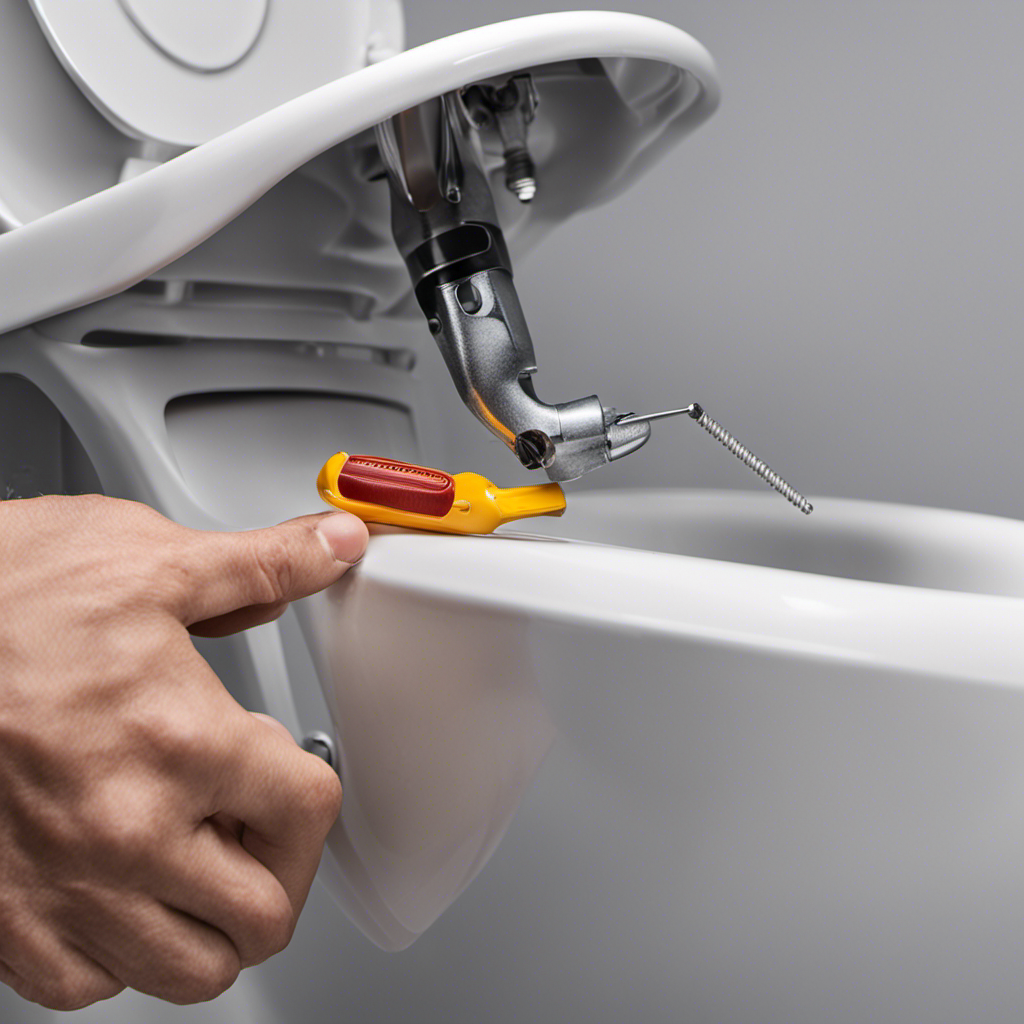We’ve all dealt with the annoyance of a blocked toilet. But imagine if there was an easy fix that could clear all our problems in a flush? Introducing the pressure flush toilet.
This ingenious device uses the power of water pressure to ensure a thorough and efficient flush every time. With its advanced features and low maintenance requirements, it’s no wonder pressure flush toilets are gaining popularity.
In this article, we’ll dive deep into the world of pressure flush toilets, exploring their inner workings and the benefits they bring to your bathroom experience.
Key Takeaways
- Pressure flush toilets use pressurized water to forcefully flush waste, making them more effective and efficient than traditional toilets.
- They require less water per flush, resulting in water conservation and reduced water bills.
- Pressure flush toilets contribute to energy efficiency and environmental friendliness by using less energy and helping conserve water.
- Regular inspection and maintenance of pressure flush toilets are important to prevent leaks, ensure proper functioning, and extend the lifespan of the toilet.
How Does a Pressure Flush Toilet Work
To understand how a pressure flush toilet works, let’s examine the mechanics behind its efficient flushing system. Unlike traditional gravity flush toilets that rely on the force of gravity to remove waste, pressure flush toilets utilize the power of compressed air or water to create a high-pressure burst that effectively clears the bowl.
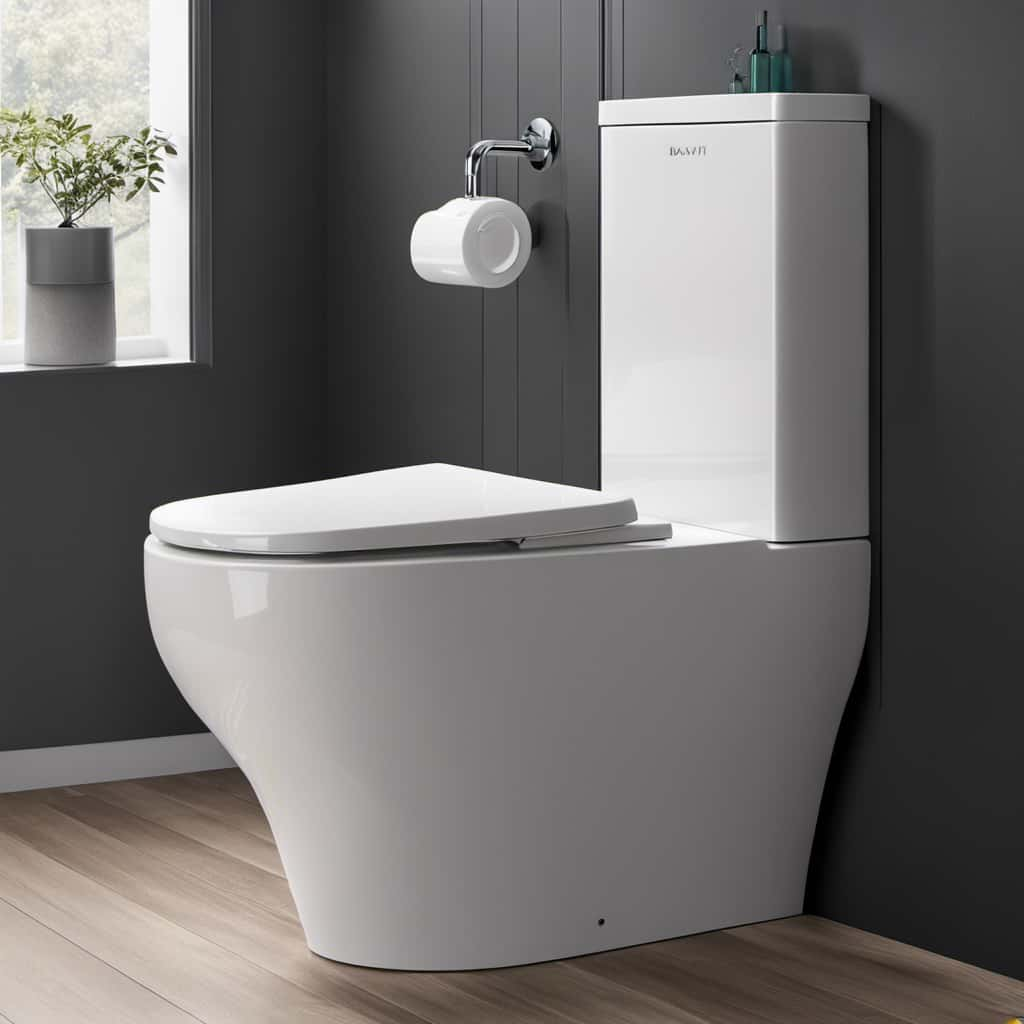
This innovative design offers several advantages over conventional toilets. Firstly, the powerful flush ensures a thorough and complete removal of waste, resulting in a cleaner bowl and fewer instances of clogging. Additionally, pressure flush toilets require less water per flush compared to gravity flush toilets, making them more water-efficient and environmentally friendly.
However, there are also a few disadvantages to consider. Pressure flush toilets tend to be more expensive to purchase and install, and they may require more maintenance due to the complexity of their flushing mechanism. Despite these drawbacks, the benefits of pressure flush toilets make them a compelling choice for those seeking a highly efficient and effective flushing system.
In the subsequent section, we’ll explore these benefits in greater detail.
Benefits of Pressure Flush Toilets
Now let’s delve into the benefits of pressure flush toilets and explore why they’re a superior choice for efficient and effective flushing.
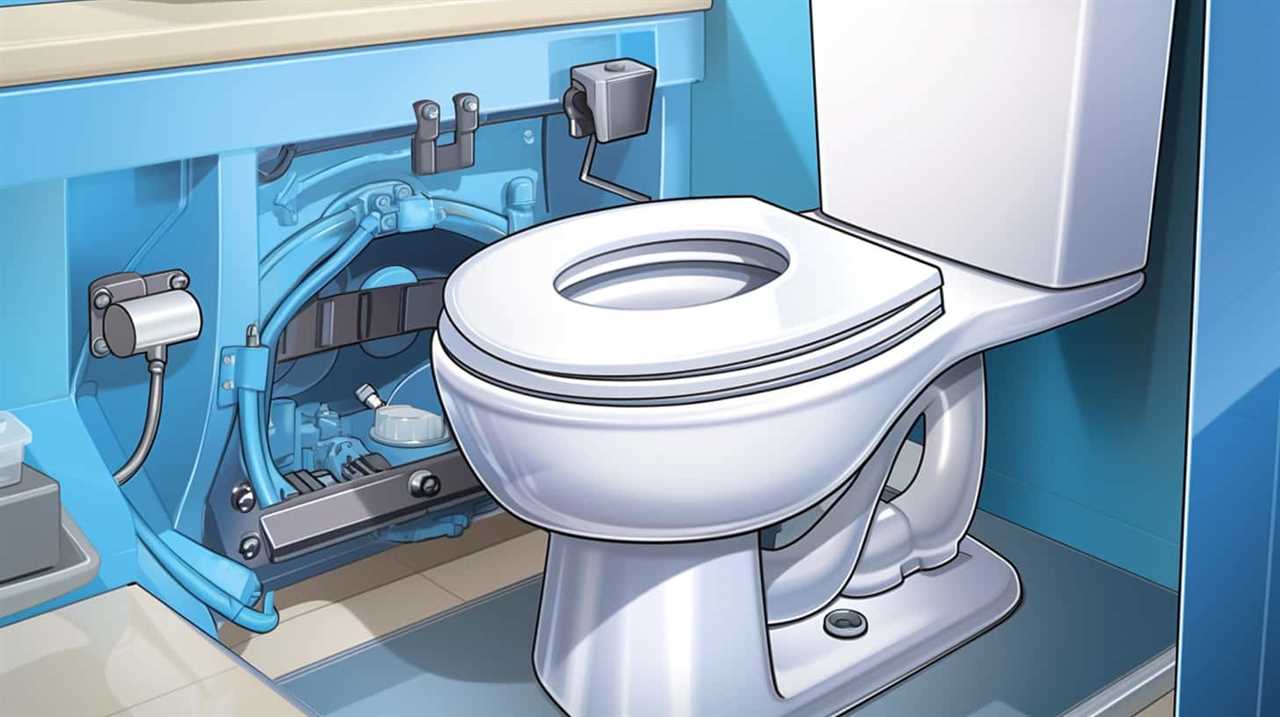
- Energy Efficiency: Pressure flush toilets utilize water pressure, which means they require less energy to flush waste compared to traditional gravity-based toilets. This results in lower energy consumption, reducing your carbon footprint and saving you money on your energy bills.
- Water Conservation: Pressure flush toilets are designed to use less water per flush while still providing a powerful and thorough cleaning. By using high-pressure water to remove waste, pressure flush toilets can effectively clean the bowl with less water. This helps conserve water, especially in areas where water scarcity is a concern.
Key Features of Pressure Flush Toilets
Pressure flush toilets have several key features that make them a popular choice for efficient and effective flushing. These features include water efficiency and noise reduction, which are important considerations for many users.
To highlight the benefits of pressure flush toilets, let’s take a closer look at these key features in the table below:
| Key Features | Description |
|---|---|
| Water Efficiency | Pressure flush toilets use a powerful burst of water to remove waste, requiring less water per flush compared to traditional gravity flush toilets. This helps conserve water and reduce water bills. |
| Noise Reduction | Pressure flush toilets operate quietly, thanks to their pressurized flushing mechanism. This is especially beneficial in residential settings, where noise can be a concern. |
Factors to Consider When Choosing a Pressure Flush Toilet
When choosing a pressure flush toilet, there are several factors that we need to consider. These factors will ensure that we select a toilet that meets our specific needs and preferences. Here are some important factors to keep in mind:
- Toilet bowl shape: Consider whether you prefer a round or elongated bowl. Elongated bowls provide more comfort, while round bowls are better suited for smaller bathrooms.
- Water pressure requirements: Check the water pressure in your home to ensure it’s compatible with a pressure flush toilet. These toilets require a higher water pressure to effectively remove waste and prevent clogs.
By considering these factors, we can choose a pressure flush toilet that fits our bathroom layout and provides optimal performance.
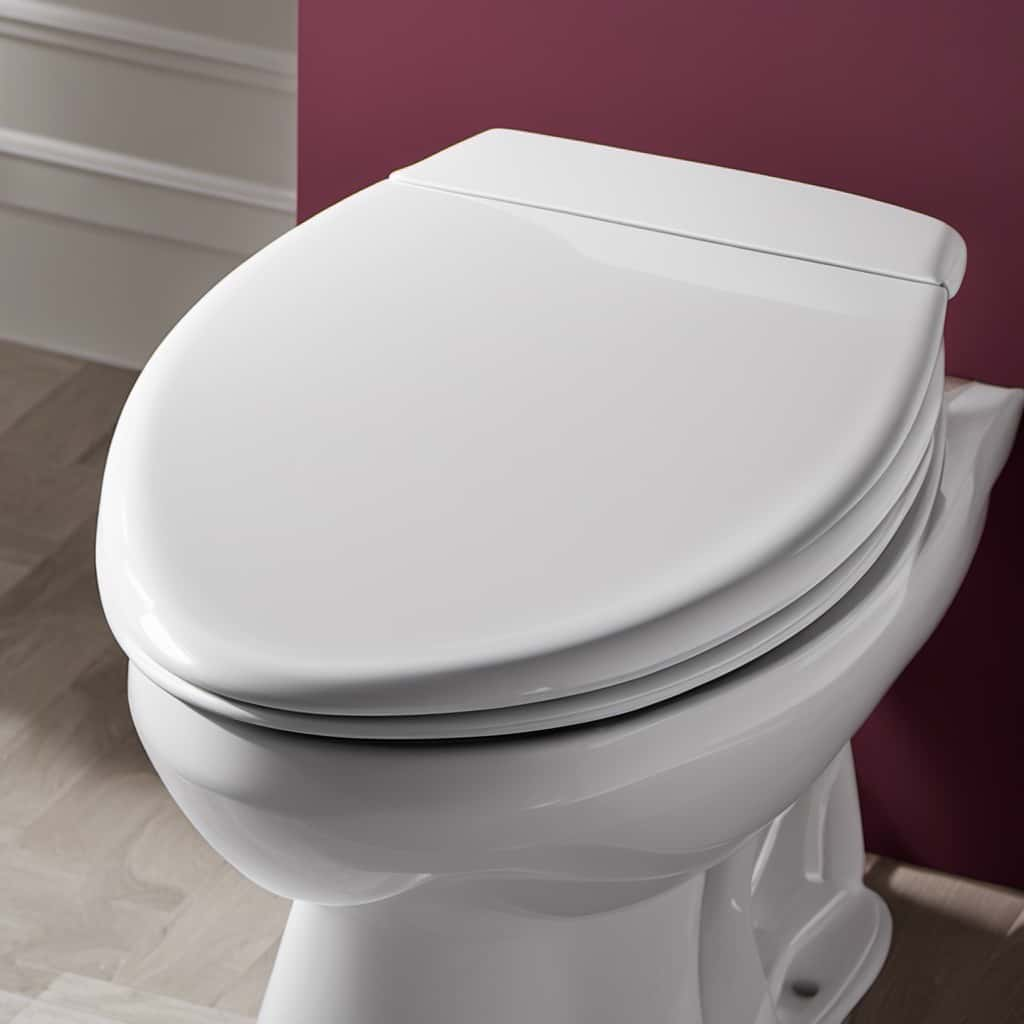
Now, let’s explore the installation and maintenance of pressure flush toilets.
Installation and Maintenance of Pressure Flush Toilets
To properly install and maintain our pressure flush toilet, we need to follow a few simple guidelines.
During installation, it’s crucial to ensure that the water supply line is securely connected to the toilet tank. This will prevent any leaks or water pressure issues. Additionally, we should carefully read the manufacturer’s instructions to ensure that all components are properly assembled.
Regular maintenance is essential to keep the pressure flush toilet functioning optimally. One common issue that may arise is a weak flush. This can be caused by a clogged rim or jet holes. To troubleshoot this, we can use a toilet brush or a wire to remove any debris.
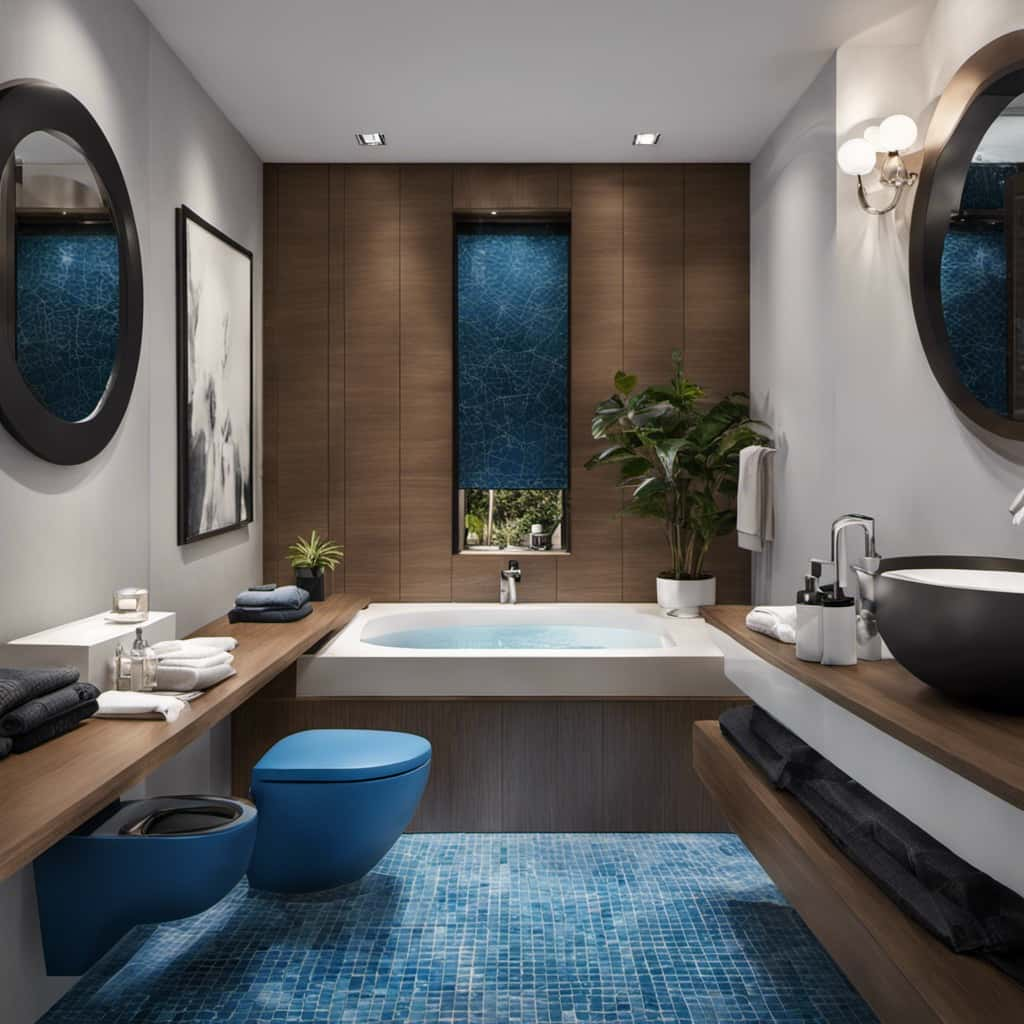
Another common issue is a running toilet, which can be caused by a faulty flapper valve or an imbalanced float. By regularly inspecting and maintaining these components, we can ensure the longevity and efficiency of our pressure flush toilet.
Frequently Asked Questions
Are Pressure Flush Toilets Suitable for All Types of Plumbing Systems?
Pressure flush toilets can be suitable for all types of plumbing systems. However, it is important to consider the installation requirements and ensure proper maintenance and upkeep to avoid any potential issues.
Can a Pressure Flush Toilet Be Installed in an Existing Bathroom or Does It Require Specific Modifications?
Installing a pressure flush toilet in an existing bathroom may require specific modifications to accommodate the installation process. However, the benefits of pressure flush toilets, such as increased efficiency and better waste removal, make it worth considering.
Do Pressure Flush Toilets Use More Water Than Traditional Toilets?
Pressure flush toilets can use less water than traditional toilets due to their water-saving technologies. A comparison of water usage between pressure flush and gravity flush toilets reveals the efficiency of pressure flush systems.
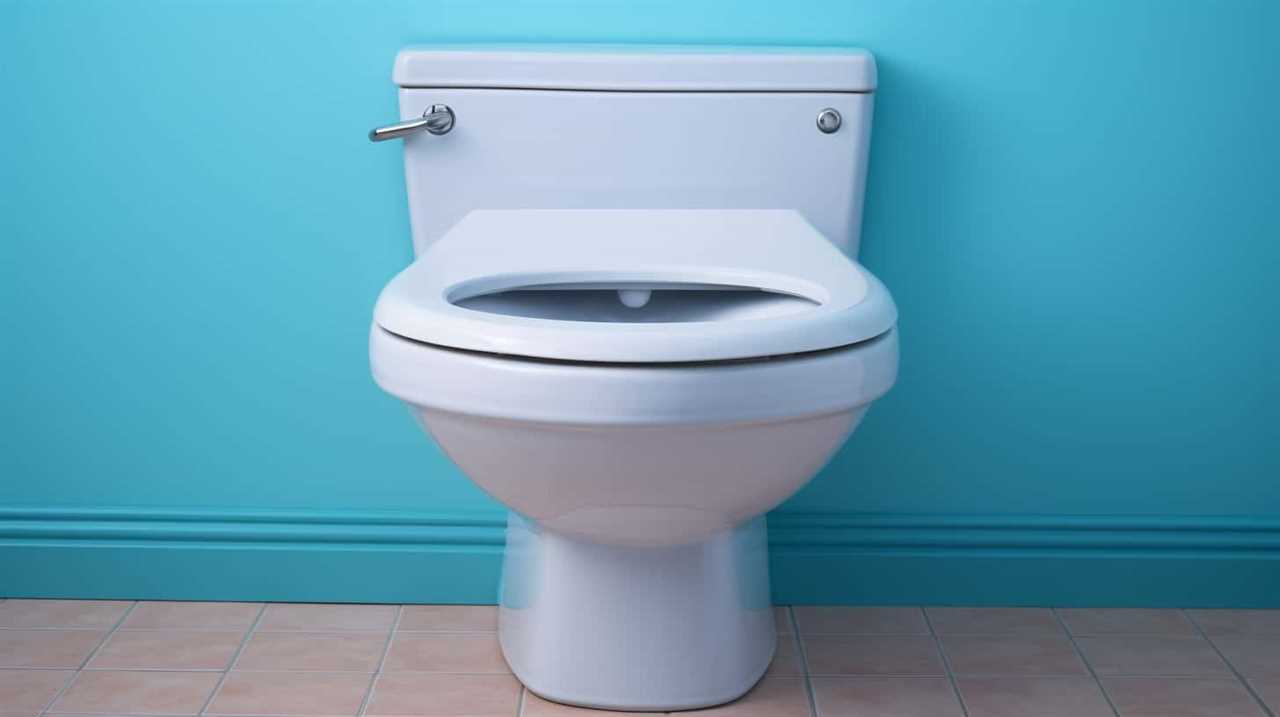
Are Pressure Flush Toilets Louder Than Traditional Toilets?
Pressure flush toilets can be louder than traditional toilets due to the powerful water pressure used to flush. However, they are designed to be efficient, using less water and saving on water bills.
Can Pressure Flush Toilets Handle Larger Waste Loads Than Traditional Toilets?
Pressure flush toilets can handle larger waste loads than traditional toilets. We recently had a party with lots of guests, and our pressure flush toilet efficiently handled the increased usage without any issues. The benefits of pressure flush toilets are evident in their efficiency and ability to handle larger waste loads.
Conclusion
In conclusion, pressure flush toilets offer a highly efficient and effective solution for maintaining cleanliness and hygiene in the bathroom. With their powerful flushing mechanism, these toilets provide a thorough and complete flush, ensuring that waste is properly disposed of.
The benefits of pressure flush toilets, such as water conservation and reduced clogging, make them a practical and environmentally friendly choice. When choosing a pressure flush toilet, consider factors such as water pressure requirements and installation ease.
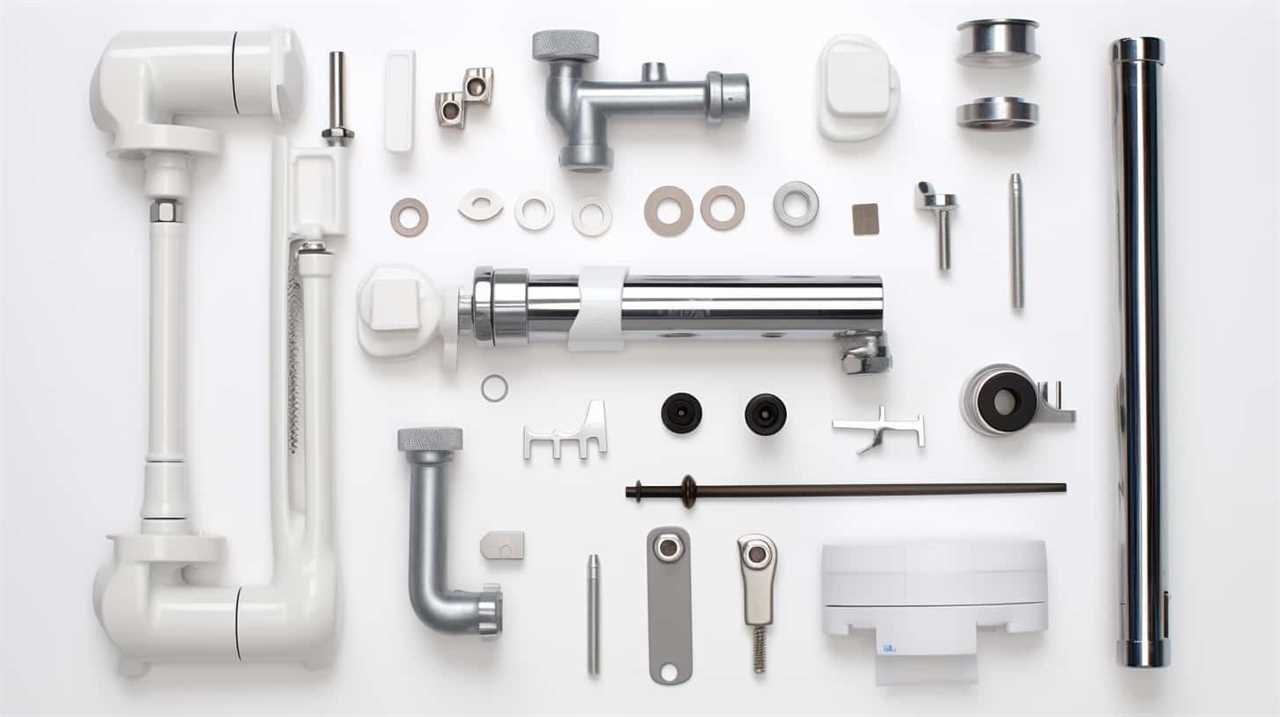
Overall, pressure flush toilets are a reliable and efficient option for any bathroom.
